We are reader-supported. When you buy through links on our site, we may earn an affiliate commission. Learn More…
How to Make a Dirt Bike Street Legal
We’ve all dreamed of making our favorite track or offroad dirt bike into a daily driver. After all, who wouldn’t want to spend more time on their favorite vehicle, especially when work days or errands are involved? However, there are some details you need to know before you ultimately investigate how to make a dirt bike street legal.
It’s entirely up to you whether or not you decide to modify your dirt bike, but we want to give you the full rundown of how to make a dirt bike street legal before you decide either way.
Should you make your dirt bike street legal?

Before you commit to making your dirt bike street legal, first understand that this will be a long and thoughtful undertaking. Since so many state laws vary in ways large and small, you’ll need to do thorough research on exactly what’s required for street legality in your state. Even our local laws can dictate specific ways of how to make a dirt bike street legal, and we know from experience that this can make things even more complicated. If you’re willing to take your time and get into the weeds with your research, this is a good sign that making your dirt bike street legal is within reach.
Secondly, making a dirt bike road legal can get expensive regardless of which dirt bike brand you own. While we agree you don’t have to splurge on fancy tech, street legal tires and electrical upgrades can set you back on your journey of learning how to make a dirt bike street legal. Before committing to this project, some quick research and a running total will help you decide if street legal modification is a smart idea – or if you’ve drastically underestimated what’s involved. This is especially true if you’ll be relying on someone else for mechanical work, as labor also isn’t cheap.
As an offshoot of dirt bike cost, we have one other suggestion. Some of us have had similar urges in the past, but we haven’t wanted to lose the functionality of our favorite ride. No matter how you cut it, riding your dirt bike will feel different before and after you modify it. We can tell you how to make a dirt bike street legal, but that doesn’t mean you necessarily should. Instead, consider forking over the cash for a second investment and have one traditional dirt bike and one that’s street legal. Need a daily driver that’ll get you around town and back home? Consider a scooter or motorcycle that fits your needs instead. Need a road-legal monster that’ll go the distance? Upgrade to a dual-sport bike that will no doubt fit your road tripping needs in the future.
If you’ve read through our list and decided road legal mods are still for you, read on to see how to make a dirt bike street legal.
Electrical Street Legal Upgrades
Head & Tail Lights
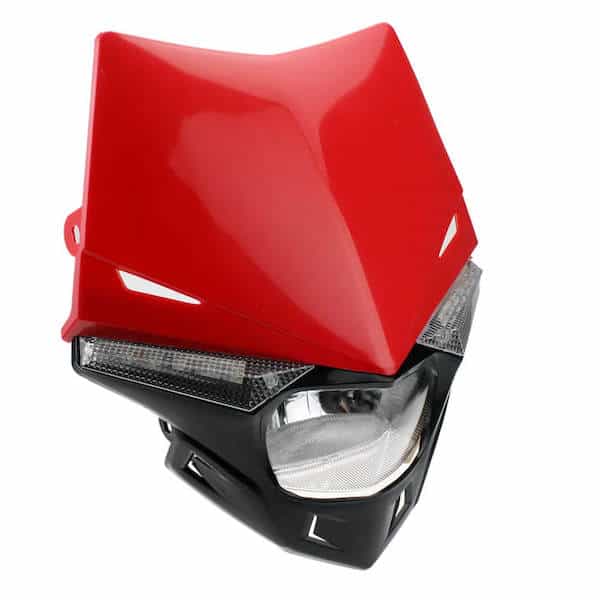
Both head and tail lights are required in every US state, and it’s easy to see why. We all know your lights both alert other drivers and help you see when daylight hours have passed. While not all states may not absolutely require a headlight that’s DOT certified, we recommend grabbing a compliant one anyway in learning how to make a dirt bike street legal.
To be compliant, a headlight must have both high and low settings along with being lit at all times. Installation for the setting switch can be specific in some states, so we recommend looking at your local regulations just to make sure it’s in the right place.
As far as tail lights, you’ll need one that at least doubles as a brake light. While hooking it up to your central power source isn’t always required, we recommend doing so since you’ll already be making similar upgrades. You’ll also need to make sure that all brakes on your dirt bike are hooked up to the brake light, so it’ll trigger regardless of which brake you use.
For both head and tail lights, we recommend purchasing LED lights since they draw less power to run. This can save you some hassle with power issues down the line as you understand how to make a street legal dirt bike.
Turn Signals
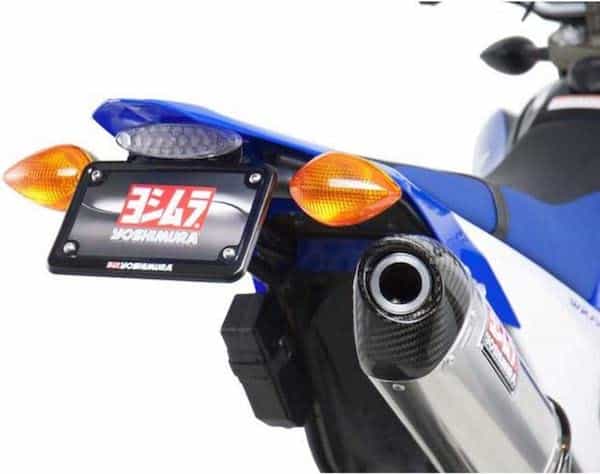
Turn signals are a bit of a grey area in researching how to make a dirt bike street legal. There are a fair number of states that do not require them, and instead only require hand signals from the driver. While lit signals may not be required where you live, we recommend at least considering them.
For one, certain tail lights on the market serve the function of a brake light, license plate light and turn signals as one unit, making installation easy. Secondly, a lit turn signal at night is going to grab way more attention than a hand signal ever will. This means you won’t have to worry about remembering what your signals are or whether someone can see them at all.
If you install turn signals as you pursue how to make a street legal dirt bike, refer to your states specific rules to ensure you’re compliant. As with your other lights, we recommend seeking out LED turn signals or the all-in-one option above so power is less of a concern.
Horn
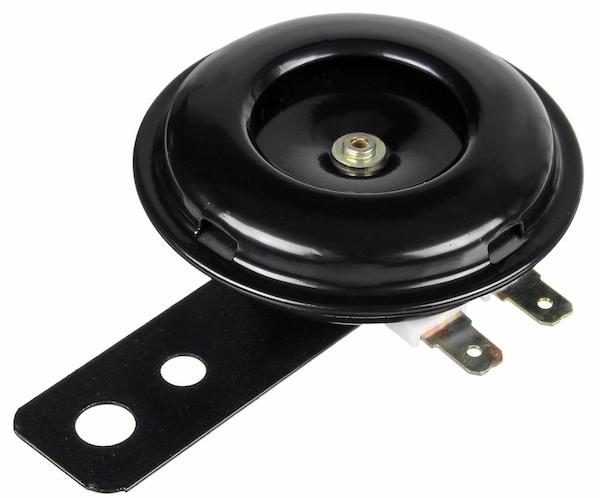
Similar to the debate on turn signals, some states do not require an electric horn. To reduce the hassle of investigating, we recommend installing an electric horn anyway. You’ll find in learning how to make a dirt bike street legal that electric horns won’t suck up much power compared to your lights or turn signals. Along with mirrors and kickstands, a horn is one of the cheapest upgrades you’ll buy.
Power System – Battery, Alternator & Regulator

Between operating your new lights, turn signals and horn, you’ll be pulling more passive electrical power from your bike than what’s previously been required. Your dirt bike runs off alternating current, and while this works for standard dirt bike uses, you’ll need to rewire your dirt bike to process direct current. Re-working the electrical settings is essential in learning how to make a dirt bike street legal, and it extends the longevity of all the electrical pieces you’ve invested in.
Since many dirt bikes don’t need much electrical power, we can assume that you’ll either need to rewind your alternator for a higher output, or get a new alternator that supplies more power. Along with this, a regulator does the job of converting standard alternating current to direct current, so that your system can use it without issues. As long as you keep about 15 volts leftover to charge the battery after your other power needs, you’re in a good spot.
Speaking of batteries, you probably haven’t had to consider the power output of your dirt bike before now. Investing in a charging system that contains a battery, alternator and regulator from the start is the best course of action. This step is one of the more complex in understanding how to make a street legal dirt bike, but it’s worth the effort so you don’t throw away your progress!
Recommended: Gauge Kit
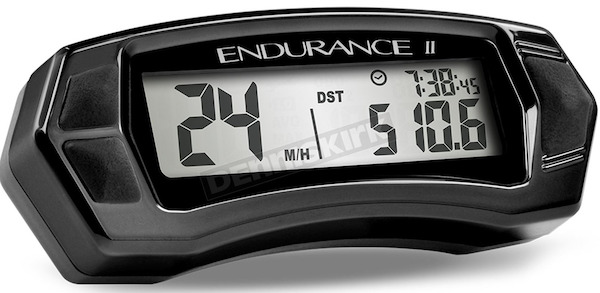
The only state that implicitly requires a speedometer is Indiana, so you may be tempted to strike this off your list. Before you do, allow us to remind you that you’ll probably only be hauling around a few gallons of gas at any time. Investing in an all-in-one gauge kit not only helps you track your gas usage, but also your trips, mileage, speed, and engine metrics like temperature and RPM. We can understand if this is a later addition to your build in undertaking how to make a dirt bike street legal, but don’t say we didn’t warn you if you get stuck on the side of the road!
Recommended: Engine Fan & Gearing Adjustments
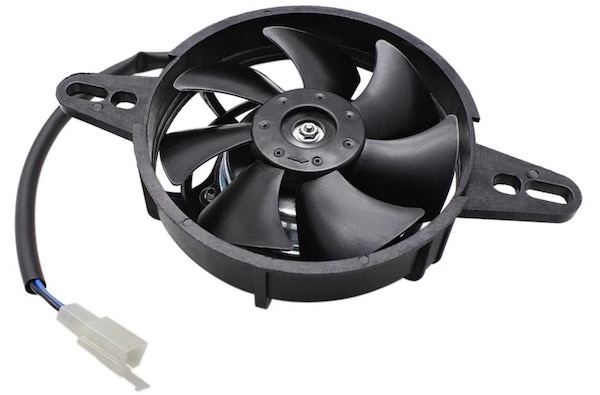
Your dirt bike has most likely been running one way the whole time you’ve had it, and that’s about to change. For one, it’ll generate far more heat than it used to from sitting in traffic on your daily commute, and you won’t need the rapid power that’s required in an MX race.
To handle these changes in learning how to make a dirt bike street legal, we recommend installing an engine fan to avoid overheating, and updating your gearing to reflect what you’ll actually need. Fiery power is great in competitive settings, but we doubt you’ll require this level of force while running weekly errands.
Recommended: Cush Drive Hub
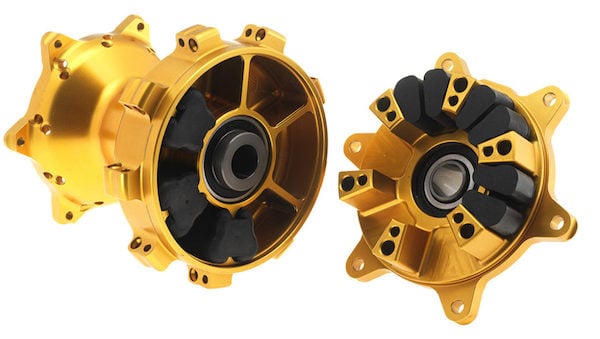
Since much of the impact on riding trails or tracks is absorbed by a back wheel with sideways movement, we invite you to consider one extra upgrade while pursuing how to make a dirt bike street legal. You’ll be working your transmission in a whole new way, and when you inevitably hit potholes or rough pavement, your street-legal dirt bike will absorb all that abuse.
To combat this issue, a cush drive hub can be installed to help your modified dirt bike’s transmission system last longer. This addition puts you a step ahead and matches features found in standard road bikes.
Physical Street Legal Upgrades
Mirrors
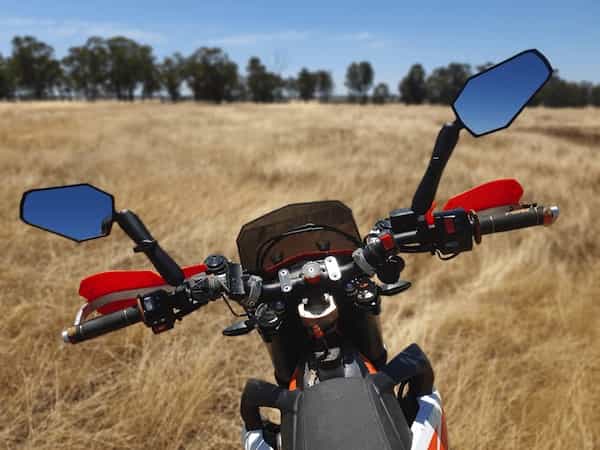
Only three states (Nebraska, Missouri and Mississippi) do not require mirrors, but we put them at the top of this list because we view them as essential. Most states require at least one, and they’re worth investing in for safety reasons.
We recognize how tempting it is to get a small, shoddy compliant mirror so you can research other parts of how to make a dirt bike street legal. However, riding on the road with other people also heightens the possibility that crazy drivers are closer to you than ever. It’s worth having at least one wide-angle mirror so you can always see what’s at your back.
Tires
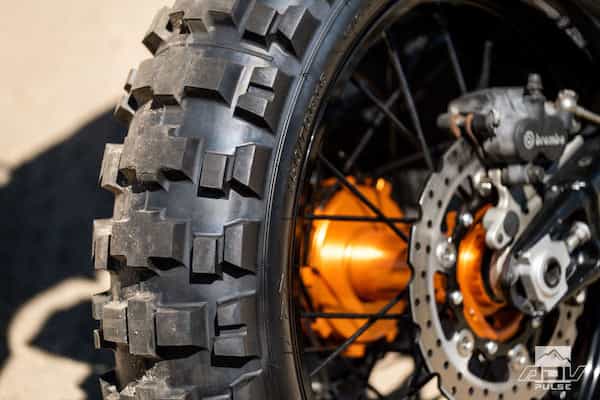
DOT-certified tires are a must on your dirt bike, both for legality and safety’s sake. You’ll be able to see this certification on the sidewall of the tires you choose, and this also means they’ll be ready for highway driving. If you still have high hopes to use your dirt bike off-road, you haven’t hit a dead end in how to make a dirt bike street legal. Both road and knobby tires are available depending on your needs, so you can easily switch out your tires depending on what you’ll be doing.
The road tires will be far easier to maneuver on the road, and they’ll last way longer too. While non-DOT dirt bike tires are great for the off-road life, we have to warn about the inherent risk of them coming apart on the road, and this can really mess up your day.
Visible License Plate
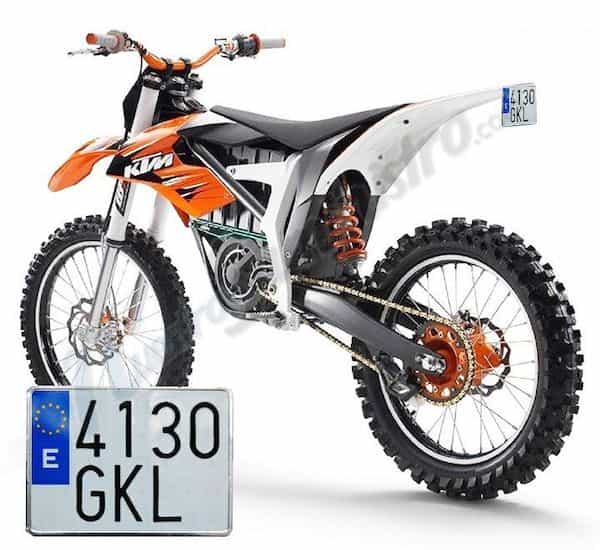
Receiving a license plate means you’ve taken the time to title and register your street-legal dirt bike. If you’re finding issues with this step, we recommend consulting a professional so you can make sure this process is done correctly and above board. If it is not, you risk your credentials being revoked at any time!
Assuming you’ve taken care of that step, you’ll need to make sure your plate is securely attached and visible on the rear of your bike. There are numerous ways to do this, but we recommend either mounting or bracketing for best results. Learning how to make a dirt bike street legal requires personal preference too!
First, you’ll need to make sure your visibility ideas line up with your state and local laws for displaying your plate. If you’re stuck on where to affix your plate, we suggest mounting it underneath the rear fender. This placement also allows for the addition of lighting so that your plate is easily viewable on the road.
Kickstand

We know, we rolled our eyes a little at this one too, since track riding virtually never calls for a kickstand. However, it’s important to remember that there are very few places to lean your bike when you’re parking in a garage or on a curb. You don’t want to arrive satisfied and then realize you have a problem, especially on your first street legal ride. Even if you think you’re thoroughly aware of how to make a dirt bike street legal, it doesn’t hurt to double check the little things.
We’ve covered the basics above, but different states inevitably have different requirements. See how your state matches up below!
State by State Regulations
How to Make a Dirt Bike Street Legal in California
Required: headlight, brake light, turn signals, single mirror
Not Required: speedometer
California has some of the most stringent laws for making your dirt bike street legal, and all upgrades except a speedometer are required to complete the process. It’s notoriously difficult to make a dirt bike street legal in California, so we suggest conferring with an experienced party to make sure all your bases are covered for both emissions standards and registration.
How to Make a Dirt Bike Street Legal in New York
Required: headlight, brake light, turn signals, single mirror
Not Required: speedometer
Like California, New York also requires all upgrades except a speedometer to make your dirt bike street legal.
How to Make a Dirt Bike Street Legal in Texas
Required: headlight, brake light, single mirror
Not Required: turn signals, speedometer
Compared to some other states, Texas is less strict with their metrics for dirt bike legality. Neither turn signals or a speedometer are required to make your dirt bike street legal.
How to Make a Dirt Bike Street Legal in Florida
Required: headlight, brake light, turn signals, single mirror
Not Required: speedometer
Florida matches California and New York in requiring all modifications except for a speedometer in order to make your dirt bike street legal.
How to Make a Dirt Bike Street Legal in New Jersey
Required: headlight, brake light, single mirror
Not Required: turn signals, speedometer
Like Texas, New Jersey is more tolerant with their laws, and they do not require a speedometer or turn signals to make your dirt bike fully street legal.
How to Make a Dirt Bike Street Legal in Pennsylvania
Required: headlight, brake light, single mirror
Not Required: turn signals, speedometer
Add Pennsylvania to the list of more lenient states when making your dirt bike street legal. Turn signals or a speedometer are not required in this state.
How to Make a Dirt Bike Street Legal in Michigan
Required: headlight, brake light, turn signals, single mirror
Not Required: speedometer
All modifications, save for a speedometer, are required to make your dirt bike street legal in Michigan.
How to Make a Dirt Bike Street Legal in Massachusetts
Required: headlight, brake light, turn signals, two mirrors
Not Required: speedometer
Of the states we’ve reviewed in this article, Massachusetts is the only one that requires two mirrors. However, you can still save some time since a speedometer still isn’t required to make your dirt bike street legal.
How to Make a Dirt Bike Street Legal in Colorado
Required: headlight, brake light, single mirror
Not Required: turn signals, speedometer
Colorado is quite lenient in comparison to some other states, since neither turn signals or a speedometer are required to make your dirt bike street legal.
How to Make a Dirt Bike Street Legal in Kentucky
Required: headlight, brake light, single mirror
Not Required: turn signals, speedometer
Kentucky matches Colorado as far as leniency, meaning you won’t have to add turn signals or a speedometer to make your dirt bike street legal.
Whether you decide that modifying your dirt bike is the right choice, or you decide to splurge on already street legal dirt bike, we know your decision will be a solid one. As always, stay tuned for more motocross advice soon!

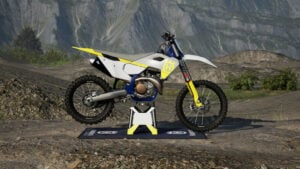




Be the first to comment